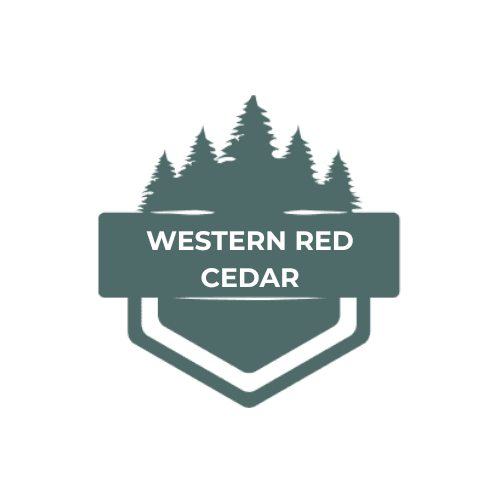No products in the cart.
 Having your own pergola is an astounding way to jazz up your garden. The spacious, open arches can serve as a beautiful outdoor element in your home. Of course, there are several different designs to choose from and we’ve listed our favorite versions here for you to go through.Design #1 – Attached Pergolas Attached pergola designs are very common but there are several outstanding designs to choose from. Try a space-defining pergola that you can attach to your French windows or to a side entrance. This semi-attached pergola can extend your living space and serve as a beautiful transition space from the inside to the outside. You can also attach the pergola to the side of your patio and create the illusion of a bigger room with natural ventilation and natural light.Design #2 – Two-Tier PergolasYou may have seen these kinds of pergolas and they lend an elegant appearance to your garden. You can do this yourself by layering two different types of roofs over each other. Try plain columns and place them at right angles to each other, and on top of each other, to create the two-tier appearance. If you keep a little space between the two-tiers, you can place pots, planters, or allow two-different colored flowering vines to occupy the space between the two tiers.Design #3 – Curved PergolasCurved pergolas are extremely beautiful. The curved latticework can increase the floor-to-roof space but still lend an extremely intimate feel to the seating area underneath the pergola. You can choose from curved lattices, basket-weave curved lattices, deep-v shaped lattices, etc. If you have the time and money, you can easily custom-build your own curved pergola to suit your garden and outdoor space.Design # 4 – Disconnected PergolasYou may have a large garden but disconnected pergolas and walkways are an exceptional way to bring seating arrangements together. Create stone walkways and cover them with horizontally curved pergolas. The pergolas can be disconnected from each other and spread out over a large garden.Design #5 – Over the Door and Window PergolasIf you have sufficient space around your doors and windows, consider adding pergolas that extend for two to three feet over your doors and windows. Not only do they architectural interest to your building but they can also form a framework for climbing vines. In case you have the space, you can also extend a single window pergola for three feet and place a seating arrangement under it to make a small cozy nook.Design # 6 – Extra Large PergolasFor houses that have sufficient outdoor space, an extra-large pergola can act as an outdoor room. Fit it with an outdoor fireplace, a barbeque, central dining area, bar and seating and you are good to go.Design #7- Pool House Pergolas If you have a large pool, set up a combined pool-house-pergola space. Use classic columns, curved thatch roofs, tiled flooring, comfortable seating, shower rooms, etc. to make your pool-house-pergola comfortable, intimate, and trendy as well.Design #8 – Pergola EntrywaysJazz up your home and its entryway by setting up a pergola walkway from your gate to your house entrance. It adds practical protection from the sun and rain. You can also relax on hot summer days by placing seating in the walkway area. This type of walkway is perfect if you have a large lawn but a small backyard. Instead of using the backyard, convert the walkway into a large seating area.Design #9 – Rooftop Garden PergolasIf you don’t have enough space in the backyard or as your lawn, set up a pergola on your roof. Most manufacturers do make lightweight pergolas that can be set up in an hour on your roof. Aluminum is the most common material but stainless steel is also popular. If you like eco-friendly versions, you can choose from bamboo, raffia matting, coir, and so on. Choose from a range of colors and designs or make your own lightweight version to form a shady place to relax on your roof.Design # 10 – Contemporary StylingInstead of the classic wood beam appearance, contemporary pergolas are far more popular at present. The most common style consists of lightweight aluminum poles that support vinyl-mesh sides and retractable tops. Non-mechanized versions are also available and they are cheaper. These types of pergolas are available in several colors and sizes and they are weather resistant as well.As you can see, you can choose from a huge range of stylish pergolas and gazebos for your outdoor space. In case you want to make your pergola multifunctional, some manufacturers also offer multi-level structures in the above mentioned designs. All you have to do is purchase the ready made pergolas, and set them up in your backyard, patio, lawn, and so forth and prepare it for any special occasion.
Having your own pergola is an astounding way to jazz up your garden. The spacious, open arches can serve as a beautiful outdoor element in your home. Of course, there are several different designs to choose from and we’ve listed our favorite versions here for you to go through.Design #1 – Attached Pergolas Attached pergola designs are very common but there are several outstanding designs to choose from. Try a space-defining pergola that you can attach to your French windows or to a side entrance. This semi-attached pergola can extend your living space and serve as a beautiful transition space from the inside to the outside. You can also attach the pergola to the side of your patio and create the illusion of a bigger room with natural ventilation and natural light.Design #2 – Two-Tier PergolasYou may have seen these kinds of pergolas and they lend an elegant appearance to your garden. You can do this yourself by layering two different types of roofs over each other. Try plain columns and place them at right angles to each other, and on top of each other, to create the two-tier appearance. If you keep a little space between the two-tiers, you can place pots, planters, or allow two-different colored flowering vines to occupy the space between the two tiers.Design #3 – Curved PergolasCurved pergolas are extremely beautiful. The curved latticework can increase the floor-to-roof space but still lend an extremely intimate feel to the seating area underneath the pergola. You can choose from curved lattices, basket-weave curved lattices, deep-v shaped lattices, etc. If you have the time and money, you can easily custom-build your own curved pergola to suit your garden and outdoor space.Design # 4 – Disconnected PergolasYou may have a large garden but disconnected pergolas and walkways are an exceptional way to bring seating arrangements together. Create stone walkways and cover them with horizontally curved pergolas. The pergolas can be disconnected from each other and spread out over a large garden.Design #5 – Over the Door and Window PergolasIf you have sufficient space around your doors and windows, consider adding pergolas that extend for two to three feet over your doors and windows. Not only do they architectural interest to your building but they can also form a framework for climbing vines. In case you have the space, you can also extend a single window pergola for three feet and place a seating arrangement under it to make a small cozy nook.Design # 6 – Extra Large PergolasFor houses that have sufficient outdoor space, an extra-large pergola can act as an outdoor room. Fit it with an outdoor fireplace, a barbeque, central dining area, bar and seating and you are good to go.Design #7- Pool House Pergolas If you have a large pool, set up a combined pool-house-pergola space. Use classic columns, curved thatch roofs, tiled flooring, comfortable seating, shower rooms, etc. to make your pool-house-pergola comfortable, intimate, and trendy as well.Design #8 – Pergola EntrywaysJazz up your home and its entryway by setting up a pergola walkway from your gate to your house entrance. It adds practical protection from the sun and rain. You can also relax on hot summer days by placing seating in the walkway area. This type of walkway is perfect if you have a large lawn but a small backyard. Instead of using the backyard, convert the walkway into a large seating area.Design #9 – Rooftop Garden PergolasIf you don’t have enough space in the backyard or as your lawn, set up a pergola on your roof. Most manufacturers do make lightweight pergolas that can be set up in an hour on your roof. Aluminum is the most common material but stainless steel is also popular. If you like eco-friendly versions, you can choose from bamboo, raffia matting, coir, and so on. Choose from a range of colors and designs or make your own lightweight version to form a shady place to relax on your roof.Design # 10 – Contemporary StylingInstead of the classic wood beam appearance, contemporary pergolas are far more popular at present. The most common style consists of lightweight aluminum poles that support vinyl-mesh sides and retractable tops. Non-mechanized versions are also available and they are cheaper. These types of pergolas are available in several colors and sizes and they are weather resistant as well.As you can see, you can choose from a huge range of stylish pergolas and gazebos for your outdoor space. In case you want to make your pergola multifunctional, some manufacturers also offer multi-level structures in the above mentioned designs. All you have to do is purchase the ready made pergolas, and set them up in your backyard, patio, lawn, and so forth and prepare it for any special occasion.
 A
A


